While the hugely successful World War Two Latin American Lend-Lease program has been very thoroughly investigated, documented and commented upon since the 1970s, an earlier –and short-lived– U.S. government-backed program, which was a component of the effort to eliminate Axis influence in the region, has been all but forgotten.
Gaining prominence, mainly within the Executive and State Department leadership, in 1940 and nearly up to Pearl Harbor, this was the so-called Defense Aid program, which included funding and financing via the largesse of the Reconstruction Finance Corporation (RFC), a “New Deal” Roosevelt creation to combat the impact of the Great Depression.
Pulling together information gleaned from both military attaché’s and Bureau of Foreign and Domestic Commerce attachés throughout Latin America, but with scant support from the U.S. Army and Navy – both of which were scrambling to rearm at precisely the same moment – the South American Defense Aid Program was ambitious and, more importantly, enjoyed the complete backing of the presidency.
The Vision
As will be seen in the following country-by-country discussion, had the South American Program actually moved forward, it would have changed the evolution of military aeronautics in the region significantly.
Ironically, while the master plan was drawn up sometime in the Fall of 1941, all of the identified deliveries were predicated upon an “On-Program Delivery” of December 30, 1941 – 23 days after the completely unanticipated Japanese strike on Hawaii which, on the surface of it, brought the entire Program to a halt.
But in fact, some of the RFC-backed aircraft included in the overall Plan had already been built and paid for, and were in the so-called “pipeline.” These, for the most part, were retrospectively swept under the Lend-Lease umbrella for fiscal accountability and thus their origins as Defense Aid acquisitions have become obscure and poorly understood.
The program envisioned a grand total of not fewer than 692 aircraft, of which, by December 30, 1941, just 13 had actually been acquired and delivered. The remainder were forecast for delivery from January 1942 through January 1943.
Students of Lend-Lease will quickly recognize that some of these planned deliveries in fact came to pass in virtually the identical quantities outlined in the Defense Aid South American Program, thus validating at least some of the pre-war plans. Others, however, were overtaken by the priorities associated with equipping U.S. and British Commonwealth forces fighting for survival during calendar year 1942.
Especially notable in the by-country discussion was the very substantial program for Argentina which, had it come to pass, would have almost certainly mitigated for that important nation becoming an Allied co-belligerent or, at the very least, neutral with affinity for the Allied cause – and have perhaps utterly changed the post-war, overwhelmingly British composition of the Fuerza Aérea Argentina (FAA).
The program was also vastly different from the final Lend-Lease aircraft composition, especially as regards plans for Brazil and Mexico – while poor Haiti, Honduras, El Salvador and Panama were not mentioned at all.
Readers will find a number of surprises in the following tables, arranged by combat, patrol, transport and training types, and most notably, the apparent willingness of the USAAF and U.S. Navy to surrender brand-new Douglas A-24s, Lockheed A-29s, Naval Aircraft Factory PBN-1 Catalinas and second-hand Curtiss P-36s to the program, along with other surprising types.
Combat Types
| Type | A-24 | A-29 | PBN | JRF-1 | P-36 | OS2U-3 |
| Total Planned | ||||||
| Delivery Schedule | ||||||
| January 1942 | ||||||
| February 1942 | ||||||
| March 1942 | ||||||
| April 1942 | ||||||
| May 1942 | ||||||
| June 1942 | ||||||
| July 1942 | ||||||
| August 1942 | ||||||
| September 1942 | ||||||
| October 1942 | ||||||
| November 1942 | ||||||
| December 1942 | ||||||
| January 1943 |
Transport Types
| Type | GB-2 | Model 18 Lodestar | C-45 (series) |
| Total Planned | |||
| Delivery Schedule | |||
| January 1942 | |||
| February 1942 | |||
| March 1942 | |||
| April 1942 | |||
| May 1942 | |||
| June 1942 | |||
| July 1942 | |||
| August 1942 | |||
| September 1942 | |||
| October 1942 | |||
| November 1942 | |||
| December 1942 | |||
| January 1943 |
Trainers of All Types
| Type | PT-17 (series) | PT-19 (series) | BT-13 (series) | SNC-1 Falcon | AT-6 (series) | AT-17 Bobcat |
| Total Planned | ||||||
| Delivery Schedule | ||||||
| January 1942 | ||||||
| February 1942 | ||||||
| March 1942 | ||||||
| April 1942 | ||||||
| May 1942 | ||||||
| June 1942 | ||||||
| July 1942 | ||||||
| August 1942 | ||||||
| September 1942 | ||||||
| October 1942 | ||||||
| November 1942 | ||||||
| December 1942 | ||||||
| January 1943 |
It is interesting to compare both the types selected and the total quantity of each to be offset compared to actual Lend-Lease deliveries. The 50 AT-6s noted were, in fact, amongst the first combat-capable aircraft to be delivered under Lend-Lease, via not less than a Presidential Order, and far in advance of the South American Defense Aid Program projections. On the other hand, the coveted Naval Aircraft Factory PBN-1s did not materialize at all, and other commitments – aside from 10 very used Curtiss P-36As for Brazil – were handled on a case-by-case basis, largely dictated by the politics of the situation. None of the Cessna AT-17s, as such, reached Latin America, nor did the Grumman JRF-1s. While Vought-Sikorsky OS2U-3s were eventually supplied to Mexico, Cuba, Chile and Uruguay, the delivery schedule was substantially different from that predicted prior to Pearl Harbor.
Now, a look at the individual country programs, arranged alphabetically by recipient.
Argentina
The South American Defense Aid Program for Argentina, described prior to December 7, 1941, as “tentative,” called for a total of not less than 102 aircraft – some for the Army and others for the important Argentine naval aviation establishment.
These were to have comprised 50 Vultee Model 54 (BT-13) series aircraft, 23 Douglas A-24s, eight Lockheed A-29s, 13 Vought-Sikorsky OS2U-3s and eight Naval Aircraft Factory PBN Catalinas.
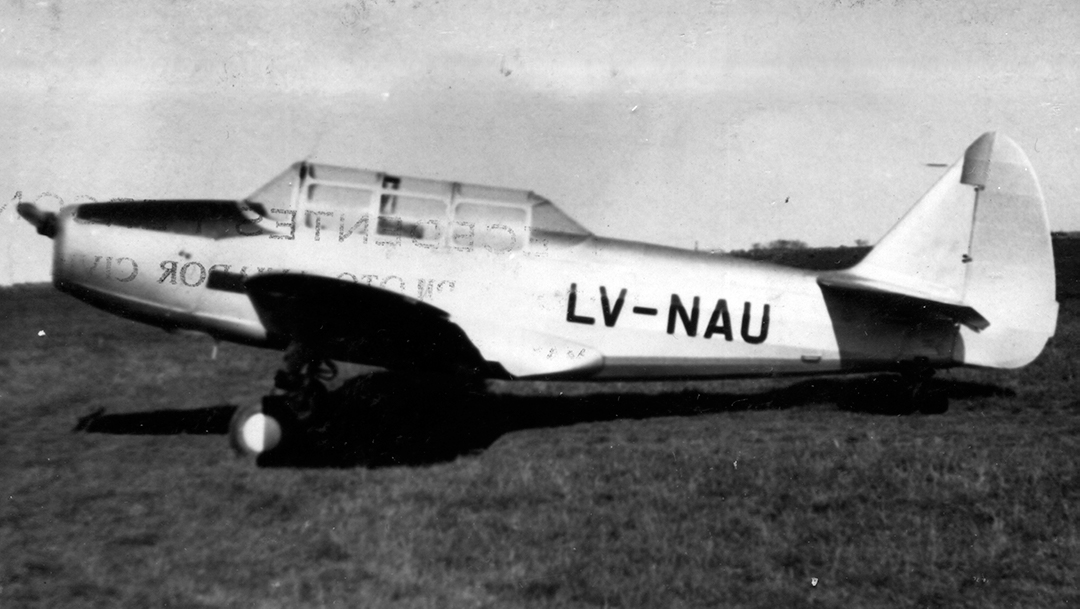
Obviously, none of this came to pass, and the solitary aircraft received by the Argentine government from its United States counterpart during the war was a single Fairchild M62A-3 (PT-19A msn T42-3537, formerly 42-33871 and NC-700) in April 1943, consigned to the Junta Argentina de Aviación as LV-NAU on May 31, 1943.
Bolivia
Bolivia was tentatively set to receive a total of 35 aircraft, comprising 15 Fairchild PT-19 series aircraft, 12 Vultee BT-13s, four Cessna AT-17s and one unidentified “single engine transport” which was, in fact, a Beech D17S. In reality, Bolivia benefitted far more generously than this from Lend-Lease.
Brazil
The primary beneficiary of the entire South American Program was to have been Brazil, with a total of 189 of the 692 aircraft projected in the basic plan.
Of these, 20 of 21 Fairchild Model 24 series aircraft – which, oddly, were not described at all in the original program charts, and the acquisition of which had been financed in part by the RFC, had already been delivered by December 30, 1941 as had two Lockheed Model 18 Lodestar series aircraft, only one of which, for President Vargas himself, had gained military marks, the other going to Panair do Brasil, which resulted in no end of correspondence.
Also not cited on the original plan were four Culver LFA aircraft, which were apparently to be earmarked for the Army to immediately turn over to the vast Brazilian aero club system. It is not clear if these ever actually reached Brazil, although these may well have been amongst PP-THX (msn 294) registered September 17, 1941, and Culver LCA PP-TIH (msn 227), registered September 24, 1941.
The remainder of the aircraft on the plan were all for the Força Aérea Brasileira (FAB) and comprised 45 Fairchild PT-19s, 50 Vultee BT-13s, 20 Curtiss P-36As1, 14 Douglas A-24s, 10 Lockheed A-29s, eight Naval Aircraft Factory PBN Catalinas, 14 Beech GB-2s and three Beech C-45 series aircraft – the latter requested but not programmed. These were all to have been delivered between January 1942 and January 1943, with the greatest concentration between February and June 1942 with 110 of the total to have been involved.
As we know, Brazil in actuality received a vastly greater number of aircraft via Lend-Lease between 1941 and 1945.
Chile
Another major player, which the U.S. diplomatic organization was anxious to woo, Chile would have benefitted from an influx of 98 aircraft, not counting the 25 Fairchild M-62Bs she had purchased direct via RFC financing.
Here again, this was to have included, exclusive of that total, four Lockheed Model 18 series Lodestars for LAN, the state airline, and a single Culver LFA, apparently for the DGAC to employ as it saw fit.
The remainder were all to have been for the Fuerza Aérea Nacional and was to have included 26 additional PT-19s or M-62Bs, 12 Vultee BT-13s, 10 Curtiss-Wright SNC-1 Falcons, just five North American AT-6s, 10 Cessna AT-17s, 20 Curtiss P-36As and 10 Douglas A-24s.
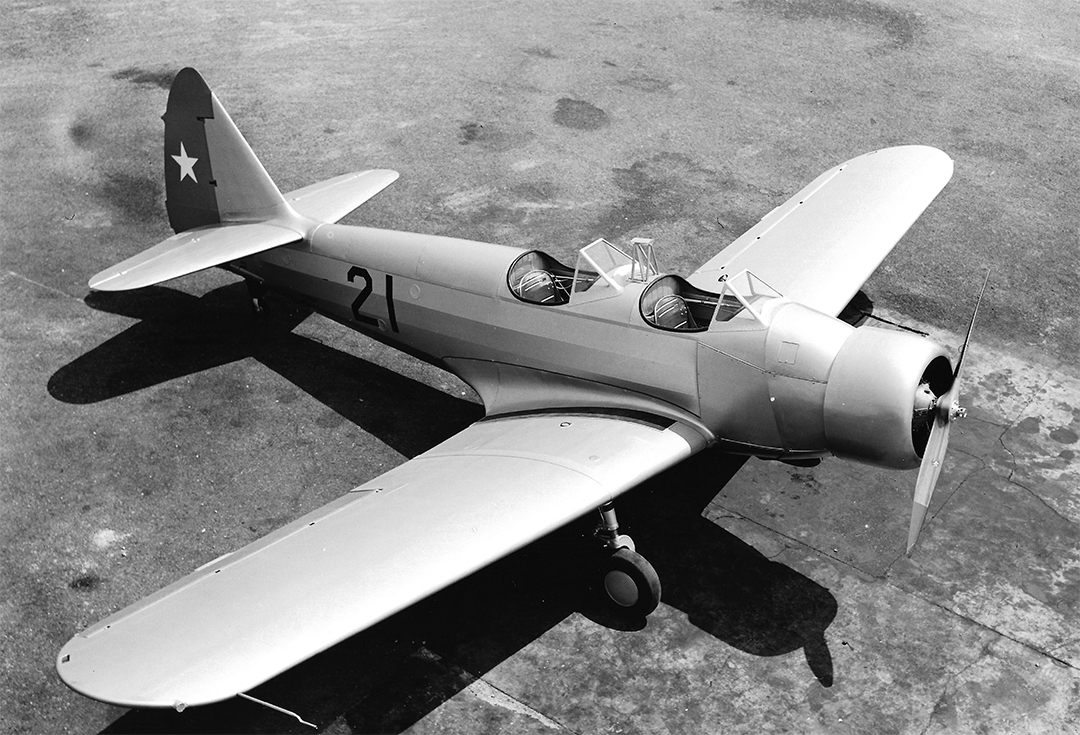
In the event, a far greater number of PT-19s, BT-13s and AT-6s were acquired via Lend-Lease but, we are the poorer for no SNC-1s, AT-17s or P-36As showing up. Oddly, Chile was not designated in the South American Program for OS2U-3s or any variant of the Catalina, but eventually got both.
Colombia
The U.S. State Department was especially anxious to steer Colombia away from what were perceived as strong pro-German influences, but oddly, the South American Defense Air Program did not seem to reflect that ambition as only a total of 28 aircraft were programed, including rather odd totals for some of the combat types. This may have been owing to the fact that Colombia already possessed a significant number of U.S. built types still operational following the Leticia exertions.
The aircraft programed included just six Fairchild PT-19s, 12 Vultee BT-13s, five Cessna AT-17s, three Curtiss P-36As and oddly, just two Douglas A-24s. Of these, only PT-19s and BT-13s materialized via Lend-Lease.
Costa Rica
This entry will come as a surprise to many readers, not least because the country had no established air arm during WWII, although the U.S. did train one airman during the war using Lend-Lease funding. As of July 3, 1941, the small standing Costa Rican Army did in fact have an aviation division, which was on duty with the Policia Nacional, with a total of 10 officers at San José, and four each at Alajuela, Cartago and Heredia, but these were mainly charged with helping manage the civil air fleet in the country and had no aircraft.
Nonetheless, under the South American Defense Aid Program, Costa Rica was to have tentatively acquired one solitary Vought-Sikorsky OS2U-3. Exactly how it was to have been configured, who was to have flown her, and where she was to be based remains a mystery.
Cuba
Yet another country that seems to have eventually benefitted from Lend-Lease out of all proportion to its wartime value as a possible combatant, Cuba was programed – and not just tentatively – to receive six Boeing-Stearman PT-17s, five Curtiss-Wright SNC-1 Falcons and two Grumman JRFs, all in June and July 1942.
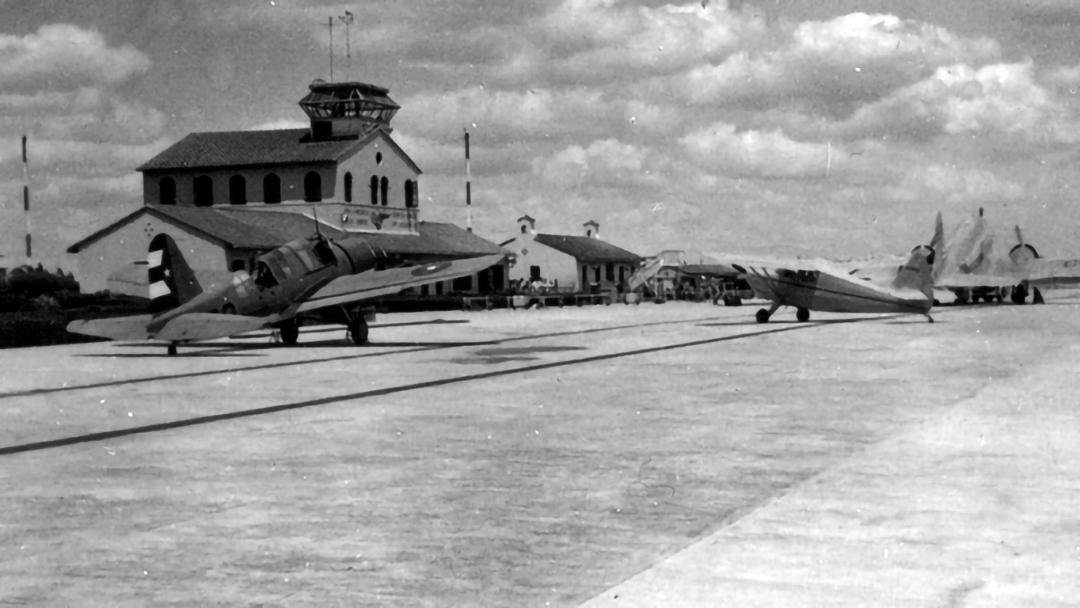
In fact, the country did indeed receive all of these, although the SNC-1s were refused following actual delivery, via Lend-Lease, and returned to the U.S. and then on to Ecuador.
Dominican Republic
Like nearby Cuba, the Dominican Republic seemed a rather curious destination for any offsets whatsoever, let alone the numbers it actually realized during the war via Lend-Lease.
In fact, the South American Defense Aid Program initially only tentatively identified a single aircraft for the country, a solitary Vought-Sikorsky OS2U-3. Despite frequent claims to the contrary, none were in fact acquired, and those programed ended up with the Cuban Navy instead.
Ecuador
The U.S. was bending all efforts to gain Ecuadorian approval for basing rights in the Galapagos Islands and, not surprisingly, the South American Program included 18 aircraft for Ecuador – in addition to four Fairchild M-62As which had been acquired with RFC financing prior to December 30, 1941.
The 18 included eight additional PT-19s, five Cessna AT-17s and five Curtiss-Wright SNC-1 Falcons. All of these, and more, followed via Lend-Lease, excepting the AT-17s.
Guatemala
Like Ecuador, the U.S. very much desired to establish a pair of pivotal patrol plane bases at Guatemala City and Port San José, Guatemala, for the northern “pivot” of the leg to the distant Galapagos Islands to guard the northwestern approaches to the vital Panama Canal.
As a result, the South American Program envisaged nine aircraft for the Guatemala, comprising four Fairchild PT-19s, three Vultee BT-13s and two North American AT-6s.
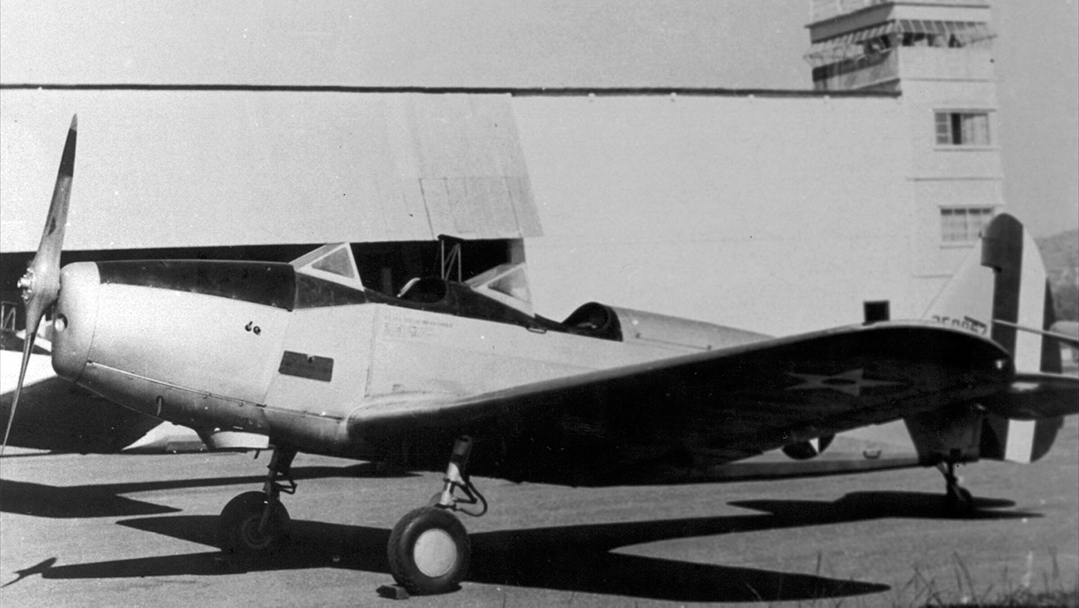
In fact, Guatemala did far better than this with Lend-Lease, and became one of only four nations in Latin America to acquire fighter aircraft via the program, although in the form of cast-me-down Boeing P-26As.
Mexico
Even as late as the Fall of 1941, the Defense Aid planners really did not know exactly what to do with regard to Mexico which, as the war unfolded, ended up eventually receiving a substantial number of aircraft, including Republic P-47D Thunderbolts.
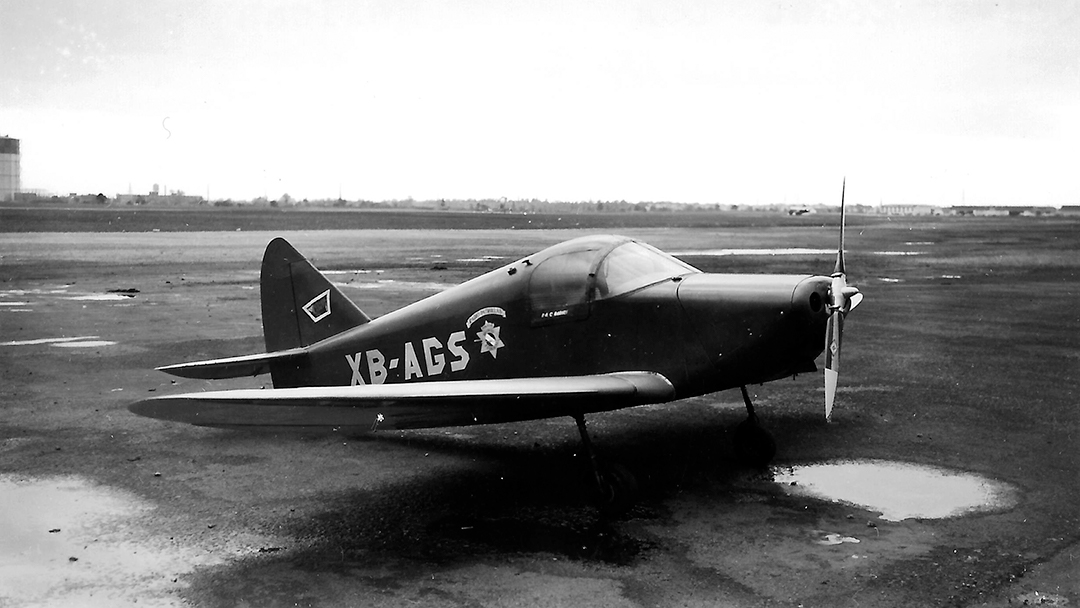
By comparison, the South American Program only identified a total of 57 aircraft for Mexico, in addition to a single Culver LFA, these comprising 10 Fairchild PT-19s, 40 North American AT-6s and seven Vought-Sikorsky OS2U-3s.
Nicaragua
Due no doubt to the very vocal pro-American bombasts from the ruling family, the South American Program planners inserted a solitary aircraft for delivery to Nicaragua, a Vultee BT-13.
In fact, like neighboring Guatemala, Honduras and El Salvador, the country actually did surprisingly well under Lend-Lease, while Honduras and El Salvador did not even get a mention in the South American Defense Aid plans.
Paraguay
Motivated once again largely by politics and geopolitical considerations, the Defense Air plan included the surprising total of 38 aircraft for Paraguay, including some genuine surprises.
These include the obligatory 23 Fairchild PT-19s and 10 Vultee BT-13s but also three Curtiss-Wright SNC-1 Falcons – and two Douglas A-24s! Of these, the country only received PT-19s and BT-13s plus a small number of AT-6s.
Peru
A major player in Latin American affairs, Peru came out surprisingly well in the South American Defense Aid Program with a total of 67 aircraft of all types.
Of these, however, 18 were Boeing-Stearman A75N1s already acquired via RFC funding and 12 Vultee Model 54 Valiants, essentially BT-13s, although at least one and possibly two of these were armament-capable.
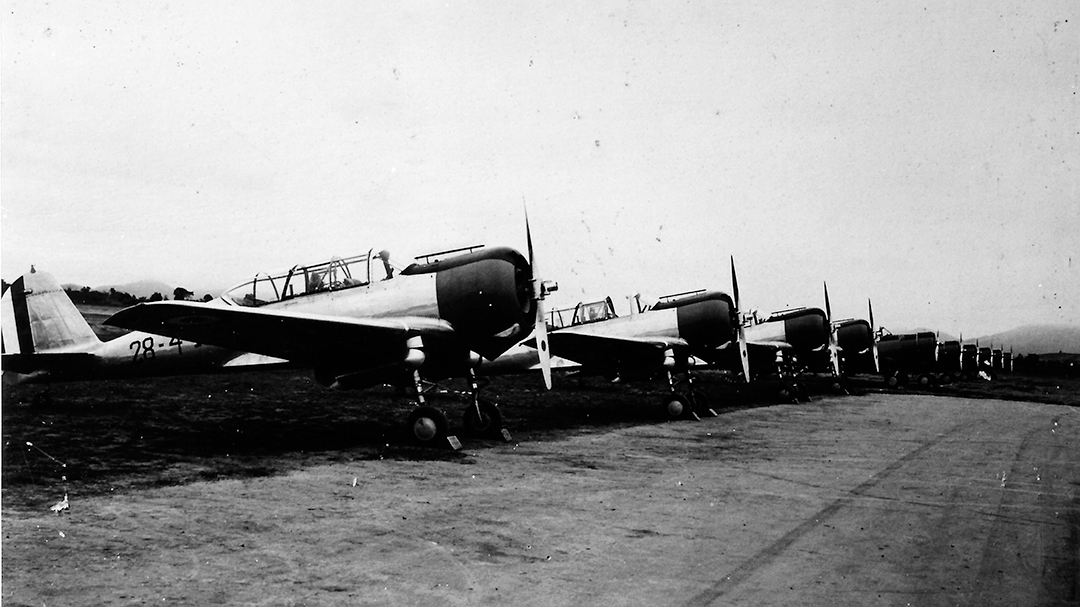
Defense Aid programed an additional pair of A75N1s, as well as 20 Curtiss-Wright SNC-1 Falcons, 10 Curtiss P-36s, two Vought-Sikorsky OS2U-3s and, oddly, four Lockheed Model 10 Electras, a type which was not on the original master plan at all, plus one Culver LFA.
In actuality, Peru did far better than this via Lend-Lease but never saw any OS2U-3s or Lockheed 10s via the program.
Uruguay
The Defense Aid planners had apparently learned the importance of small Uruguay’s position in Latin American geography following the Graff Spee incident and, perhaps with additional political aspects in the mix, programmed not fewer than 36 aircraft for the nation.
These were to comprise 12 Fairchild PT-19s, the largest number of any single type, augmented by just three North American AT-6s, two Cessna AT-17s, eight Curtiss-Wright SNC-1 Falcons (with an additional pair requested by Uruguay), two Vought-Sikorsky OS2U-3s, three Curtiss P-36As, three Douglas A-24s, two Grumman JRFs and two Culver LFAs.
Once again, in actual point of fact, Uruguay did much better than this via Lend-Lease – no doubt in part as a message to neighboring Argentina – although she saw no AT-17s, P-36As, JRFs or A-24s.
Venezuela
Surprisingly, the Defense Aid planners appear to have held a very low regard for offsets to Venezuela as, aside from 14 Boeing-Stearman aircraft (of a total of 17 acquired direct from the factory, comprising seven A75L3s, five A75B4s and five armed A76B4s) financed via the RFC, not a solitary additional type was in the plan.
Venezuela in fact prospered via Lend-Lease with a wide variety of aircraft types.

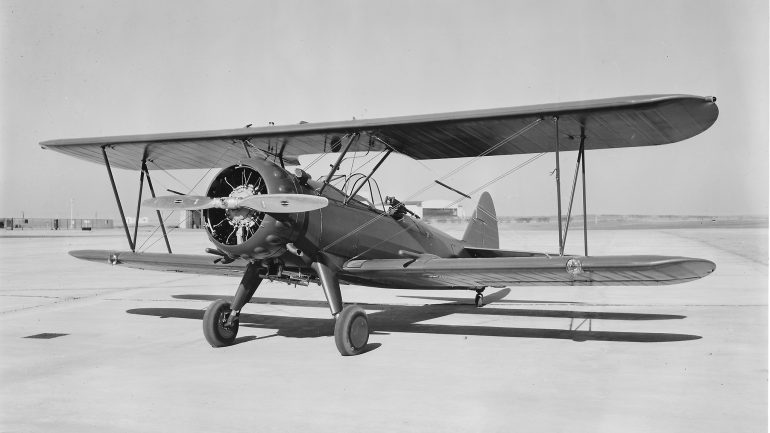

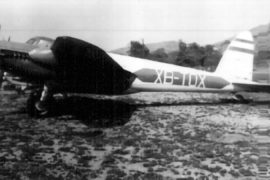
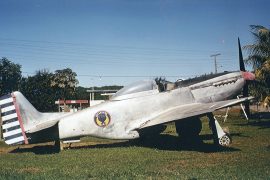
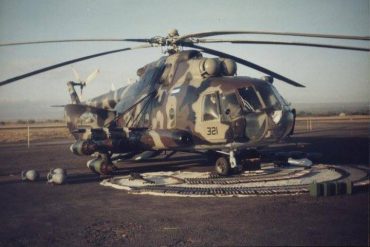
Dear Mr Hagedorn,
As I “bumped” against your article “The South American Defense Aid Program” before Lend-Lease (which I took the liberty to absorb for possible future reference*), I wondered if you detained any detail account of aircraft released by the US under Lend-Lease. Thanks in advance for any useful link. Yours sincerely & Happy New Year 2025,
–
Pierre Deveaux, Brussels, Belgium
pierre.deveaux@laposte.net
–
PS: by the way, I tried to reconcile your numbers per month & type with those mentioned per type & country and … wasn’t 100% on the mark – I must have missed something… (LOL)